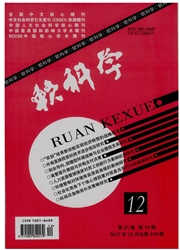

 中文摘要:
中文摘要:
构建一个两阶段的博弈模型,综合考虑OEM可能采取再制造、回收但不再制造、收取再售特许费这三种阻止策略下,探讨新产品、再制品的最优定价。通过数值仿真分析,发现三种策略均能起到缓解外部竞争的作用。同时探讨不同再制品价值折扣和产品特性下的OEM策略选择。最后分析不同策略对再制造市场和消费者的影响,提出引导OEM策略选择的建议。
 英文摘要:
英文摘要:
This paper firstly analyzes the strategies which may be taken by OEM, and concludes the main strategies (OEM remanufactures to preempt entry, OEM collects cores but.does not remanufacture, OEM asks for a relicensing fee), through a two-stage game model built, it finds the optimal pricing, demand and profit of different strategy. Result shows that as the rise of the willingness-to-pay of remanufactured products, all the strategies can reduce the loss of profits to varying degree. In addition, it discusses which strategy should OEM adopts, and the aggregate demand include new products and remanufac- tured ones in different strategies. It finds that under a reasonable relicensing fee, this strategy will not inhibit the develop- ment to remanufaeturing and also has higher aggregate demand. Relatively, OEM will restrain the remanufacturing seriously but have a greatest demand of new products. Finally, it analyzes the impact of different strategies to remanufactwing and co- msumer, then it proposes the guidance of OEM strategy adoption.
 同期刊论文项目
同期刊论文项目
 同项目期刊论文
同项目期刊论文
 Study on driven factors, wave-particle duality and dissipation structure characteristics based on su
Study on driven factors, wave-particle duality and dissipation structure characteristics based on su The virtual enterprise and performance evaluation using exergoeconomics in a closed-loop supply chai
The virtual enterprise and performance evaluation using exergoeconomics in a closed-loop supply chai 期刊信息
期刊信息
